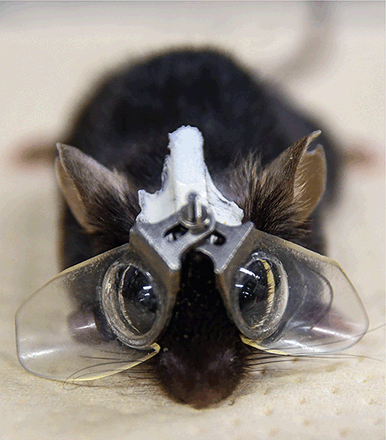Studies in mice show that short-wavelength violet light is protective against myopia.
PHOTO: PROC. NATL. ACAD. SCI. U.S.A. 118, E2018840118 (2021)
” data-icon-position=”” data-hide-link-title=”0″>

Studies in mice show that short-wavelength violet light is protective against myopia.
PHOTO: PROC. NATL. ACAD. SCI. U.S.A. 118, E2018840118 (2021)
The incidence of myopia continues to increase, fueling hypotheses that link society’s increasingly indoor lifestyle to nearsightedness. Indeed, violet light, with the shortest wavelengths of visible light (360 to 400 nm), protects against the development of myopia in the mouse, chicken, and human. Jiang et al. have found a link with circadian rhythm, showing that violet light delivered to mice (which are nocturnal) in the evening is protective against induced myopia. The protective effect depends on neuropsin, which is required for photoentrainment of mouse retinal circadian clocks. Neuropsin is expressed in retinal ganglion cells, which support the development of the vascular choroid layer that nourishes the retina. A robust choroid normalizes eyeball shape. The authors hypothesize that equivalent timing of violet light exposure for humans might be dawn. Maybe the early bird gets the worm because it can actually see it?
Proc. Natl. Acad. Sci. U.S.A. 118, e2018840118 (2021).


